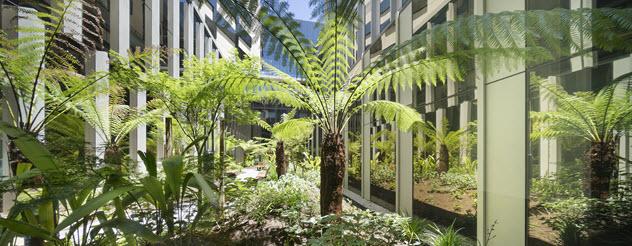
- Home
- New public health infrastructure to be all-electric
New public health infrastructure to be all-electric
With immediate effect, significant changes have been made to the rules guiding the design and construction of new public health facilities, and other government-owned facilities.
What’s changing
As part of the Victorian’s Government’s commitment to combat climate change and reduce greenhouse gas emissions, all new State Government projects that have not yet reached the design stage must be all-electric.
This measure aligns with the government's overarching sustainability goals and underscores our collective responsibility to safeguard the environment and ensure the well-being of future generations.
By transitioning to all-electric buildings, we take a crucial step towards achieving our climate targets while simultaneously promoting the health and prosperity of the communities we serve.
How we are supporting Victorian health services
The Victorian Health Building Authority is well-prepared for the transformational shift to all-electric public hospitals. Our 'Guidelines for sustainability in healthcare capital projects' already require all-electric infrastructure for facilities under 10,000 square meters and for other facilities to include a plan to transition away from natural gas.
In addition, over the past few years we’ve progressed all-electric designs for all feasibility studies for new projects, regardless of their size. This puts the health system in a favourable position to apply this policy to our significant healthcare infrastructure pipeline.
Which health infrastructure projects are impacted?
All infrastructure projects in the early planning phase will need to meet the requirements of this new policy.
Health services making a submission to the 2023-24 Regional Health Infrastructure Fund are encouraged to review your submissions to align with this new policy.
Projects that are at an advanced design stage, or already under construction are unaffected by the new rules and do not require any adaptations.
Next steps
Our project teams will work closely with health services in the early planning phase.
Should you have any questions or require clarification regarding these changes, please do not hesitate to reach out to your nominated VHBA contact or email our Environmental Sustainability team.
What is being announced for new Victorian Government buildings?
With immediate effect, significant changes have been made to the rules guiding the design and construction of new health infrastructure.
The Victorian Government will build all new government buildings as all-electric, including new schools and hospitals. This will reduce emissions and reliance on gas, while realising the benefits of all-electric technology.
How will the all-electric requirements for new government buildings apply to projects that are already under construction?
The policy on all-electric requirements for government buildings are being introduced so that projects that are at an advanced design stage, or already under construction are not delayed. These are critical projects being designed and delivered now to provide important services to Victorians and as such, they will continue to be built.
Some of these projects will take multiple years to complete and so there will be government building projects that continue to be built with gas, even as we move to phase out its use completely.
How will the all-electric requirements for new hospitals be implemented?
The Victorian Health Building Authority (VHBA) is well-prepared for the transformational shift to all-electric public hospitals. Its 'Guidelines for sustainability in healthcare capital projects' already require all-electric infrastructure for facilities under 10,000 square meters and for other facilities to include a plan to transition away from natural gas.
In addition, for the last few years the VHBA has progressed all-electric designs for all feasibility studies for new projects, regardless of their size. This puts the health system in a favourable position to apply this policy to the significant healthcare infrastructure pipeline.
The Victorian Government will be working through the implementation details over the coming months. The government builds a broad range facilities and infrastructure including hospitals and there’s a lot of detail to work through.
We will continue to innovate and work with industry to ensure that we have a robust approach to phase out fossil gas from all new buildings. Most gas use in public hospitals is for space heating, hot water and sterilisation – which can be replaced with highly efficient electric equipment.
From 2025 all public hospitals electricity use will be sourced from renewable sources, thereby maximising the carbon benefits of building all-electric hospitals.
Which health infrastructure projects will be impacted by these changes?
The VHBA is reviewing which projects may be impacted by this policy.
While the VHBA will always seek to deliver all-electric facilities, some projects may be at a stage where it is too late to implement an all-electric solution without impacts to budget and/or delivery program. Where an all-electric solution is not possible, the project will be future proofed to allow a transition away from natural gas at a later stage.
It is likely that refurbishment and fit-out projects will fall outside the scope of this policy, given that they do not involve the construction of new buildings. To support the policy intent the opportunity to convert refurbished areas to all-electric needs to be considered while being cognisant of the project’s scope, budget, and program.
Which health infrastructure projects are already being delivered as all-electric hospitals?
The VHBA is already applying this policy to a significant part of the healthcare infrastructure pipeline.
All-electric projects already underway include:
- Arden and Royal Melbourne Hospital
- New Warragul Hospital
- Maryborough Hospital
- Barwon Women’s and Children’s
- New Melton Hospital
- Ballarat Hospital redevelopment main works
- Thomas Embling Hospital redevelopment
- Angliss Hospital redevelopment
- new aged care homes at Camperdown, Rutherglen, Orbost, and Mansfield
- the community hospitals program
- early parenting centres
- Prevention and Recovery Centres (PARCs)
- new ambulance branches.
How will the new policy affect the latest rounds of the Regional Health Infrastructure Fund, Metropolitan Health Infrastructure Fund, and other infrastructure grant programs?
Submissions to the 2023-24 Regional Health Infrastructure Fund (RHIF) and Metropolitan Health Infrastructure Fund (MHIF) for construction works will need to address the new policy of all new government buildings being all-electric.
Any submissions for a new standalone building, or an expansion is to be designed and costed as an all-electric facility.
To support the policy intent, we encourage the following projects to consider, where applicable, all-electric options, while being cognisant of the overall project’s scope, budget, and program:
- refurbishment, modifications and remodelling
- meeting compliance with 'AS4187 Reprocessing of Reusable Medical Devices in Health Service Organisations' and upgrades to central sterile services departments (CSSD)
- upgrades to existing kitchens and laundries
- replacement of ageing gas infrastructure.
These submissions should address necessary upgrades and/or modifications to the broader site-wide electrical infrastructure. This includes switchboards, electrical distribution, supply augmentation, and emergency power, inclusive of spatial and structural review for any new plant and equipment.
The VHBA will review guidelines for all future grant programs to align with the new all-electric policy.
Queries relating to the 2023-24 Regional Health Infrastructure Fund can be directed to RHIF-Applications.vhba@vida.vic.gov.au.
Queries relating to the Metropolitan Health Infrastructure Fund (MHIF) can be directed to MHIF.vhba@vida.vic.gov.au.
Will the all-electric policy mean that hospitals cannot use diesel generators for emergency power?
The policy does not affect existing arrangements for emergency power.
New and existing hospitals will continue to be able to use diesel generators for emergency power.
What is the VHBA doing to phase out natural gas in existing hospitals?
As part of the Victorian Government’s Gas Substitution Roadmap, the VHBA is investigating the opportunities and barriers of transitioning existing health facilities away from natural gas over time.
The VHBA’s $40 million energy efficiency and solar program is supporting energy audits at 50 local, small rural, multi-purpose, early parenting centres and state-wide health services.
These audits are identifying opportunities to transition away from natural gas.
How will VHBA engage with health services to implement these changes?
If you have any questions on the application of this policy on a project at your health service, please reach out to your nominated VHBA contact.
Queries relating to grants from the Regional Health Infrastructure Fund can be directed to RHIF-Project.vhba@vida.vic.gov.au.
Queries relating to the Metropolitan Health Infrastructure Fund (MHIF) can be directed to MHIF.vhba@vida.vic.gov.au
All other queries can be directed to VHBA’s Environmental Sustainability team at sustainability@health.vic.gov.au.
Related content

02 October 2023
Sustainable healthcare for all Victorians
See how the Victorian Health Building Authority is making significant progress in reducing environmental impacts.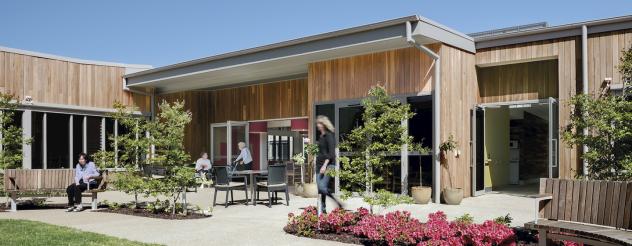
16 December 2025
Regional Health Infrastructure Fund
The $790 million Regional Health Infrastructure Fund (RHIF) provides vital government funding to rural and regional public health services across Victoria.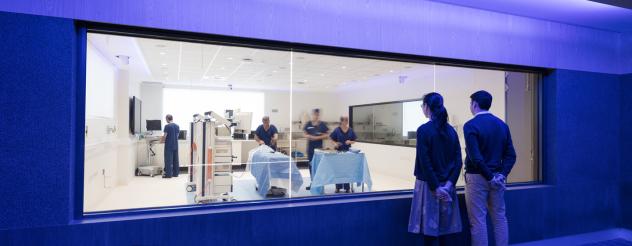
29 October 2024
Metropolitan Health Infrastructure Fund
The Metropolitan Health Infrastructure Fund provides vital government funding to city and suburban health services and agencies across Melbourne.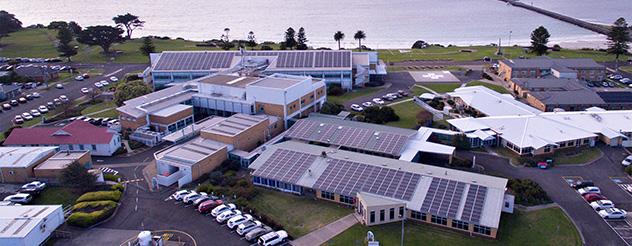
26 August 2022
How do we design health infrastructure for sustainability?
We spoke to Tiernan Humphrys, VHBA’s Environmental Sustainability Manager, about designing health infrastructure with sustainability in mind.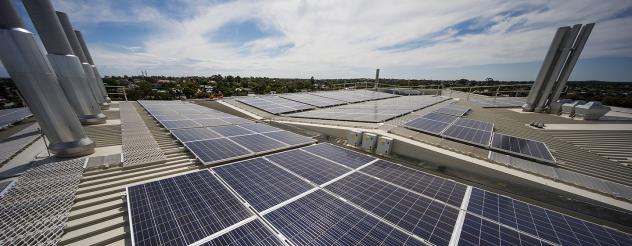
15 August 2022



